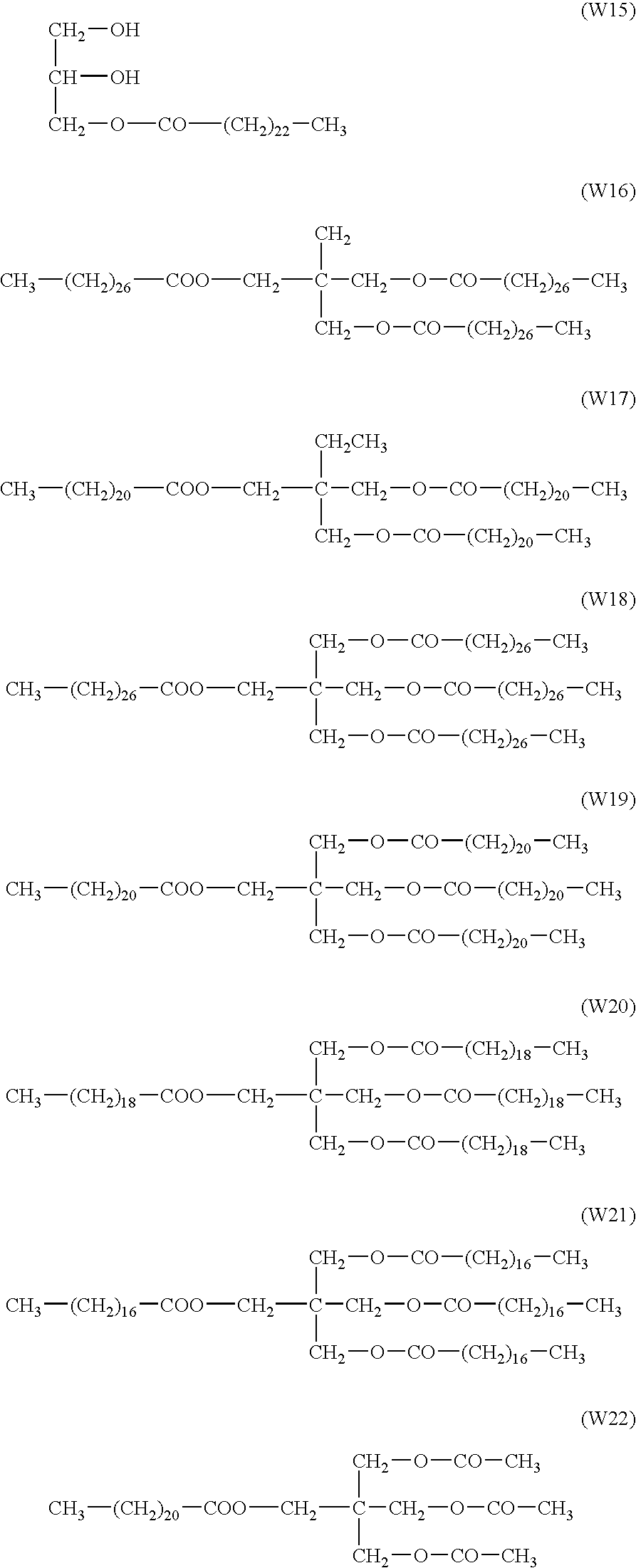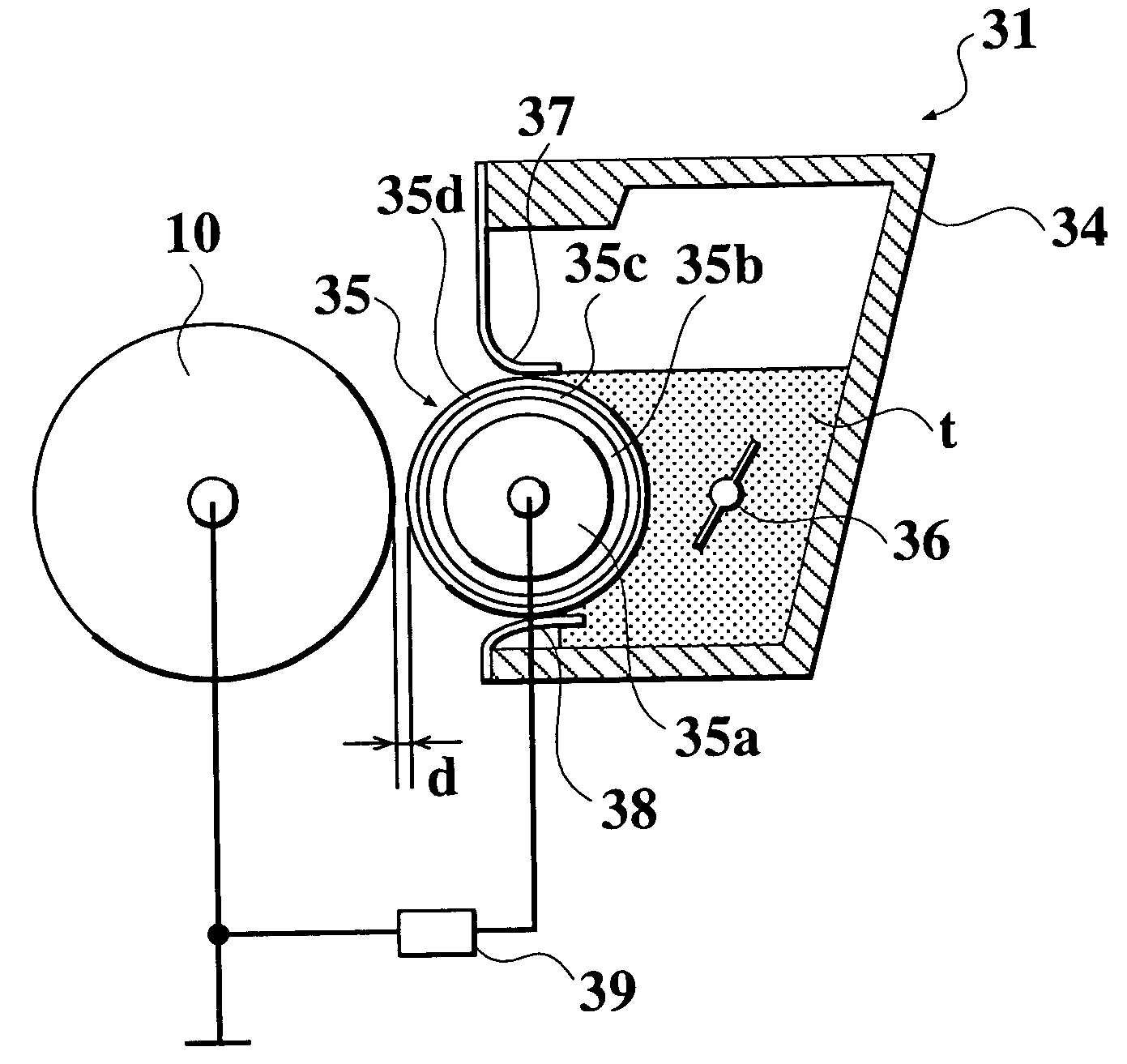Toner and image forming method
a technology applied in the field of toner and image forming method, can solve the problems of destroying toner particles, affecting the image formability of toner, and affecting the development of toner ghosts,
- Summary
- Abstract
- Description
- Claims
- Application Information
AI Technical Summary
Benefits of technology
Problems solved by technology
Method used
Image
Examples
preparation examples
C1 to C4 of Colorant Particles
[0340] Colorant particles (hereinafter also referred to as "the colorant particles (C1) to (C4)") were obtained in the same manner as in Preparation Example K1 except that a whole amount of the colorant dispersion (4) was used in place of the whole amount of the colorant dispersion (1), the growth of particles was stopped when the volume average particle diameter thereof became equal to a corresponding size shown in Table 2, and the stirring rotation rate, liquid temperature, and heating-with-stirring time period for the aging treatment were set to conditions shown in Table 1.
[0341] Characteristics of the obtained colorant particles (C1) to (C4) were checked. The results of the check are shown in Table 2 and Table 3.
1TABLE 1 STIRRING STIRRING ROTATION LIQUID TIME UNDER RATE TEMPERATURE HEATING (rpm) (.degree. C.) (h) COLORANT 120 90 8 PARTICLE K1 COLORANT 140 90 8 PARTICLE K2 COLORANT 150 88 6 PARTICLE K3 COLORANT 120 95 10 PARTICLE K4 COLORANT 120 90 8...
preparation example c5
of Colorant Particles: Preparation Example of Comparative Colorant Particles
[0345] Colorant particles (hereinafter referred to as "the colorant particles (C5)") having a volume average particle diameter shown in Table 2 were obtained in the same manner as in Preparation Example K5 except that 10 g of phthalocyanine cyan pigment "C.I. pigment blue 15:3" was used in place of 10 kg of carbon black.
2TABLE 2 RATIO OF COLORANT PARTICLES ARITHMETIC COEFFICIENT OF RATIO OF HAVING VOLUME COLORANT MEAN VALUE VARIATION ROUNDED PREDETERMINED AVERAGE PARTICLE OF SHAPE OF SHAPE COLORANT PARTICLE PARTICLE NUMBER FACTOR FACTOR PARTICLES DIAMETER DIAMETER COLORANT 1.30 9% 91 NUMBER % 7.6 VOLUME % 6.5 .mu.m PARTICLE K1 COLORANT 1.40 12% 88 NUMBER % 6.1 VOLUME % 6.6 .mu.m PARTICLE K2 COLORANT 1.45 15% 83 NUMBER % 9.1 VOLUME % 6.6 .mu.m PARTICLE K3 COLORANT 1.56 17% 81 NUMBER % 9.6 VOLUME % 6.6 .mu.m PARTICLE K4 COLORANT 1.65 22% 42 NUMBER % 11.8 VOLUME % 6.5 .mu.m PARTICLE K5 COLORANT 1.32 10% 92 NUMB...
preparation example 1
of Toner Carrier
[0369] An aluminum roller with an external diameter of 14 mm was prepared as a conductive substrate, set in an elastic layer forming mold, and an elastic layer coating liquid, referred to hereinafter, was injected around the periphery of the roller in the mold, and cured by heating at 120.degree. C. for 5 minutes. Further, a composite was obtained by heating the aluminum roller and the elastic layer coating liquid with the mold removed therefrom at 150.degree. C. for one hour, and a surface of the composite was polished by a traverse-type cylindrical grinder, whereby an elastic layer having a thickness of 1 mm was formed on the periphery of the aluminum roller.
[0370] After the elastic layer formed on the outer periphery of the aluminum roller was subjected to a surface treatment using a silane coupling agent, an intermediate layer coating liquid, referred to hereinafter, was sprayed onto the surface of the elastic layer to form a coating, and the coating was dried, w...
PUM
 Login to View More
Login to View More Abstract
Description
Claims
Application Information
 Login to View More
Login to View More - R&D
- Intellectual Property
- Life Sciences
- Materials
- Tech Scout
- Unparalleled Data Quality
- Higher Quality Content
- 60% Fewer Hallucinations
Browse by: Latest US Patents, China's latest patents, Technical Efficacy Thesaurus, Application Domain, Technology Topic, Popular Technical Reports.
© 2025 PatSnap. All rights reserved.Legal|Privacy policy|Modern Slavery Act Transparency Statement|Sitemap|About US| Contact US: help@patsnap.com



